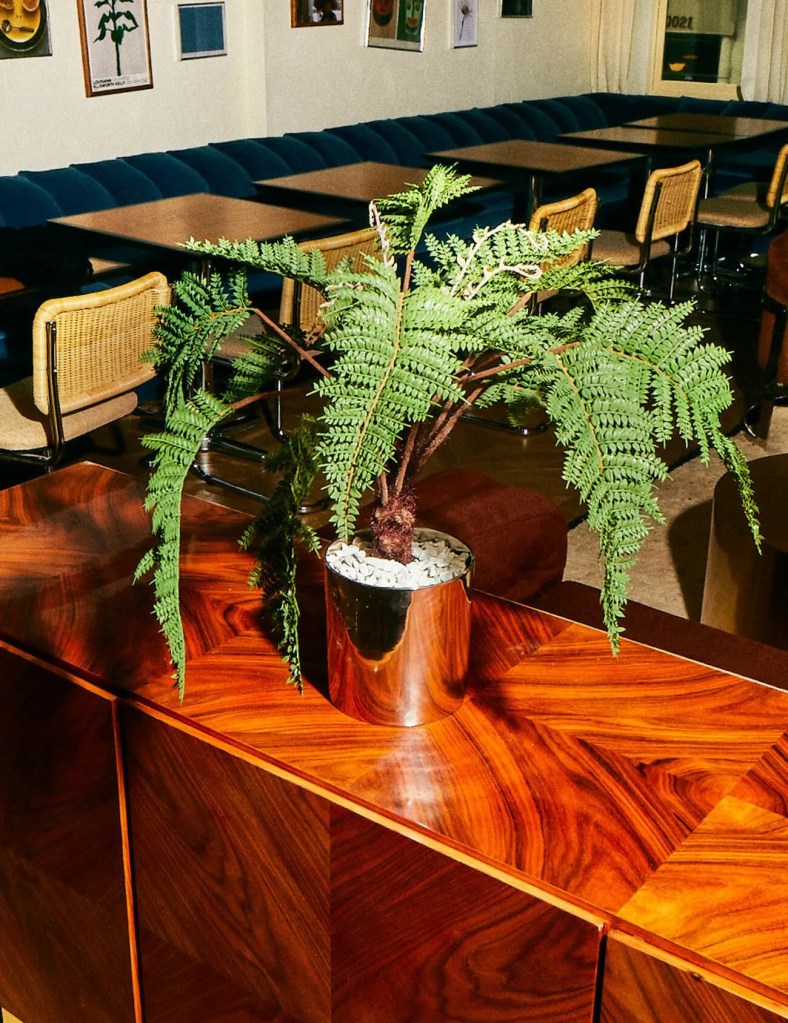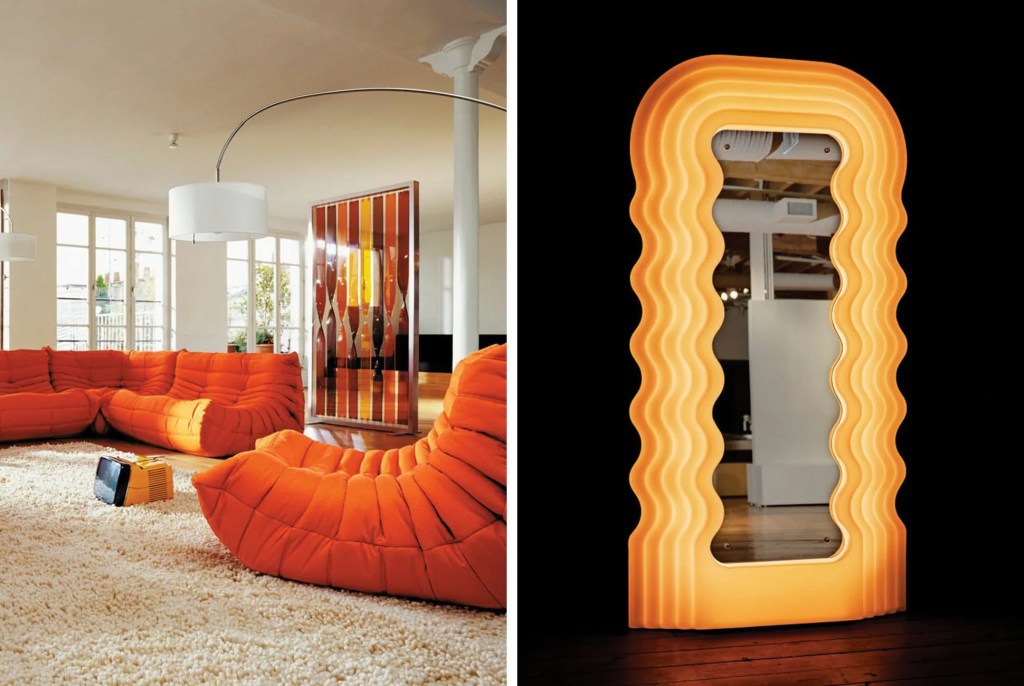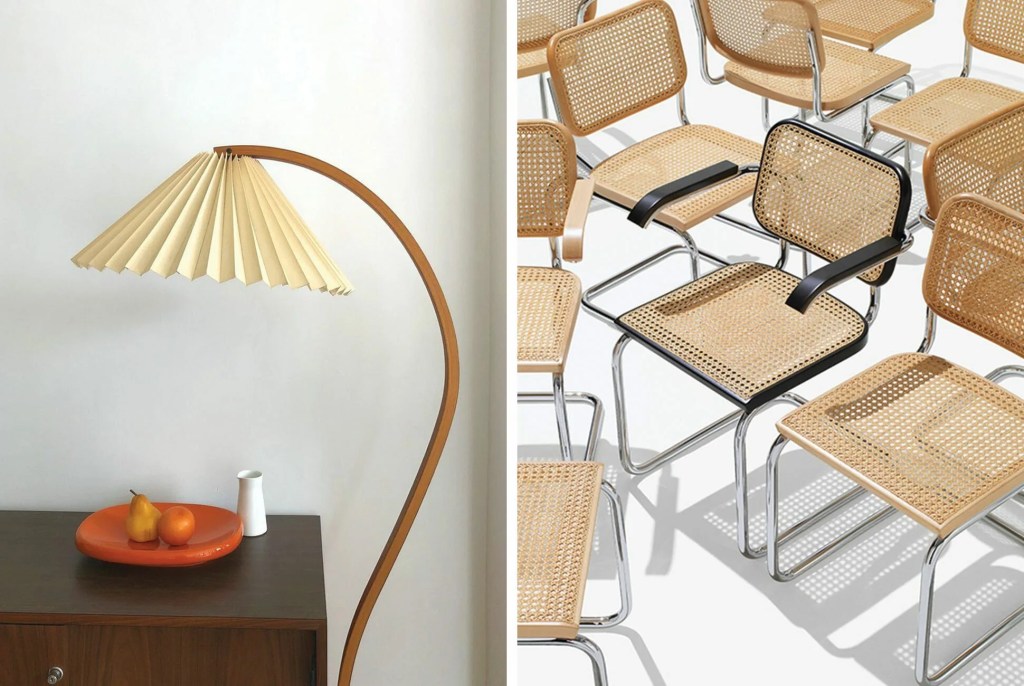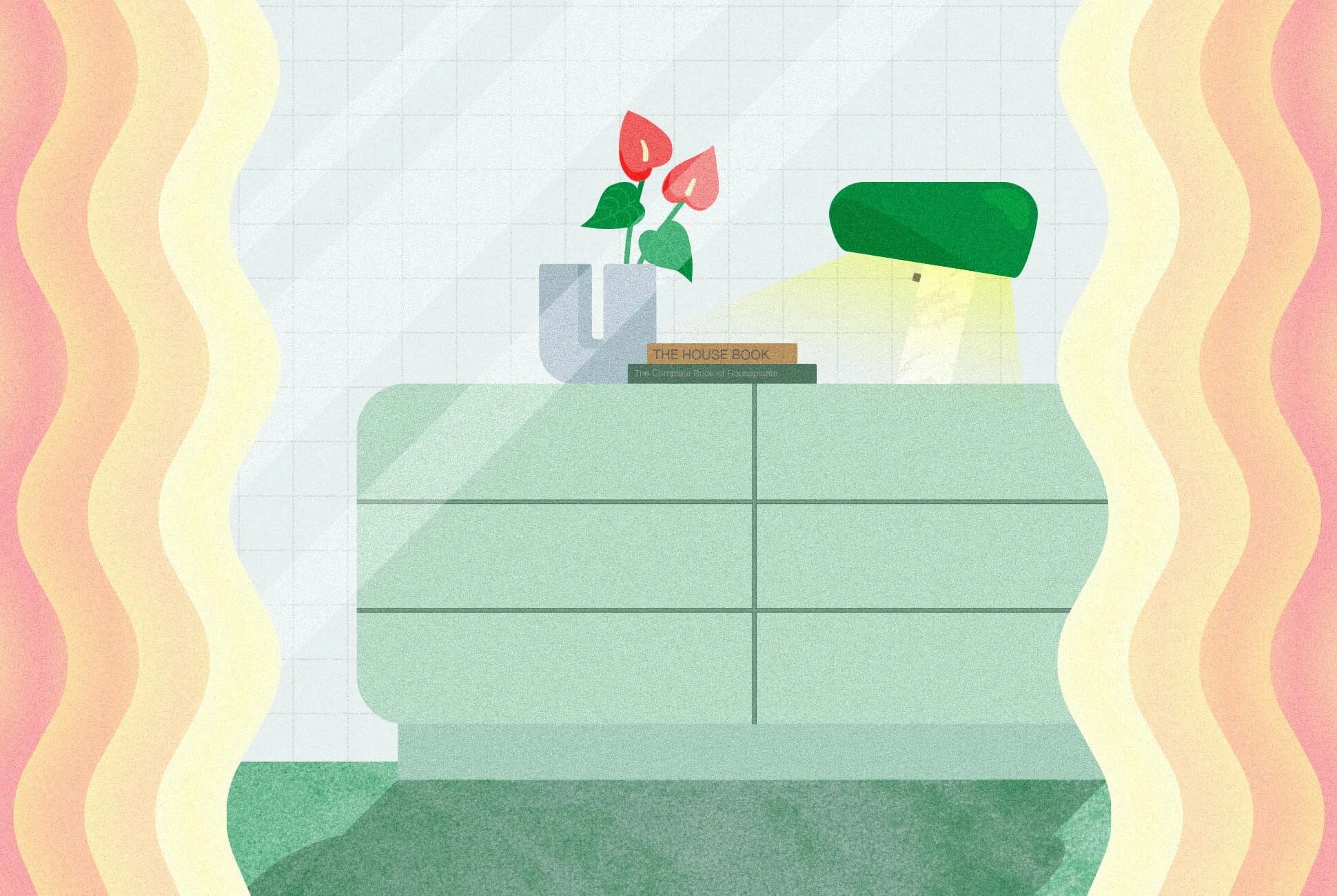What is good taste? It’s more of a consensus than a science, at once completely subjective and (supposedly) universally recognizable. “Everyone thinks they have good taste and a sense of humor,” says Carrie Fisher’s character in the 1989 Nora Ephron film When Harry Met Sally, “but they couldn’t possibly all have good taste.” Until recently, one thing most of us could agree on in terms of aesthetic judgement was the late 1970s and 80s, a period I think of as the “Long 1980s.” They were largely remembered as tacky, with little to salvage in terms of style. Who can find inspiration in a home with a carpeted bathroom? But it’s precisely that initial revulsion that’s made this period such an appealing subject for moodboarding the future. At a time when visual culture replicates itself at an alarming speed, finding beauty in overlooked corners of the past is one way to develop a sense of style driven by personal interest rather than trends.
But it’s inevitable that, despite the obscurity of one’s influences, there will be some overlap between what you like and what’s fashionable. Whether we like to admit it or not, mainstream culture has been borrowing from the Long 1980s for a few years now. Millennial pink is a close relative of mauve, a color used for everything from vases to dining tables in the Reagan era. On Instagram, Cesca chairs (designed in the 1930s but revived in the late ’70s) are as common a sight as bathroom selfies. The increasingly wacky world of floral design (now an expected feature at hip stores, restaurants, and coworking spaces), with its sculptural anthuriums and oversized scale, owes a lot to the high-end interiors of the 1980s.
There are, of course, brands and individuals who like being associated with an era that prioritized fun in interior design. Ronnie Flynn, cofounder of Eldridge Hospitality who oversaw the design of Little Ways in Manhattan (and its sister restaurant, The Flower Shop), says that the Soho location drove the direction of the space, which is modeled on the artist and designer lofts that filled that area in the late 1970s and early ’80s. To get the authentic, lived-in look Flynn and his team were looking for, they sourced a number of vintage pieces from the U.S. and abroad, including Milo Baughman tables and club chairs, Moroccan rugs, and Marcel Breuer (designer of the Cesca chair) seats.

The Long 1980s is a broad term, and the aspects of décor that have found their way into the homes and public spaces of today are the result of selective memory. It’s fair to say that the kind of 1980s-ish design that’s popular now looks more like the Cameron Frye’s house than Ferris Bueller’s. Lots of chrome and glass, less wallpaper and balloon curtains. Perhaps the defining feature of the kind of 1970s and 80s design that’s visible today is its direct opposition to mid-century modern, a term that’s become diluted by overuse. Of course, a label like 70s or 80s design is equally expansive, but it isn’t tossed around nearly as liberally. This is likely because unlike mid-century designs, the furnishings produced by the decades that followed aren’t typically associated with timelessness.
“In the 1950s and 60s, people were buying their furniture and keeping it for fifty years,” says Meghan Lavery, who co-founded vintage furniture store Home Union with her husband Daniel King in 2016. But in the 1980s, true to the conspicuous consumption stereotype, Lavery says, “people weren’t buying to keep forever,” So while furnishings from the 1980s are increasingly popular among her customers, Lavery says that it’s more challenging to source designs from that period than any other. In recent years there’s been a rise in vintage furniture dealers like Home Union that have physical stores but also have a much larger customer base (and group of virtual window-shoppers) through Instagram.
This wider display of furnishings from the era has coincided with a bump in Instagram accounts composed of scans from coffee table books and design magazines from the period like The 80s Interior, 80smodern and Architectural Indigestion. Recently, I spotted Rodale’s Home Design Series: Baths (1987) for sale in a Brooklyn boutique, alongside hand-glazed vases and essential oils.
There’s a combination of mockery and admiration in the sudden craving for 1980s interior imagery. Some of it spurs gawking (neon track lighting) while other parts of it stir affection for things that are seldom seen today (like a rent-controlled loft divided by glass bricks). All of it looks very different from the skinny metal side tables and squared off couches that dominated the look of mid aughts interiors modeled on the principles, if not the materials, of mid-century designs. For those who follow 1970s and 80s vintage dealers but aren’t likely to be making a purchase in the near future, the constant stream of unfamiliar things photographed like museum objects helps you appreciate their design. Like any kind of routine exposure, a steady diet of 1970s and 80s accents and interiors normalizes them to your eye.

Despite the disposable mentality of Long 1980s consumerism, there are still a number of iconic pieces from the era that can hold their own next to an Eames chair. Lavery from Home Union told me that there’s a big appetite for the Caprani lamp, a 1970s Danish design with a lurching bentwood spine and creamy shade that looks like an inverted muffin liner. Other collectible items include Togo sofas and lounge chairs, designed in 1973 by Michel Ducaroy for Ligne Roset (which still produces the seating today). In terms of shape, Togos are somewhere between a croissant and a sleeping bag, with just enough structure to photograph well. Other desirable finds include the Ultrafragola mirror, designed in 1970 by Ettore Sottsass, a wave-edged acrylic piece with optional peachy lights. In recent years, it has appeared on the cover of Domino magazine and the Instagram of Frank Ocean. Rather than a unified look or design movement, what these pieces share is instant recognizability.

Today, there are a number of mid-priced retailers imitating late 1970s and 80s designs, sometimes under the moniker Memphis (which refers to a short-lived postmodern Italian design collective, founded by Sottsass), but more often they’re presented without any direct reference to a specific era. This vase from Muutto would look at home in the house from Beetlejuice. This backlight pink neon floor mirror from Urban Outfitters is a more understated take on the Ultrafragola. Many of the accessories from Danish design company Hay, including this table-sized Caprani lamp lookalike, could fit into a room from a Terence Conran book.
The Long 1980s are an interesting corollary to our current cultural moment — it’s a period that saw the first instances of digital technology in the home, the emergence of yuppies, the early iterations of self-conscious minimalism in interior design. (All of these trends are summed up nicely in Patrick Bateman’s apartment.) In many ways, we have more in common with the climate of the late 1970s and 80s than that of the postwar years. For designers and consumers tired of the unimpeachable clean lines of mid-century modern, reinterpreting the often over-the-top era is an appealing challenge — and an easy way to stand out.
